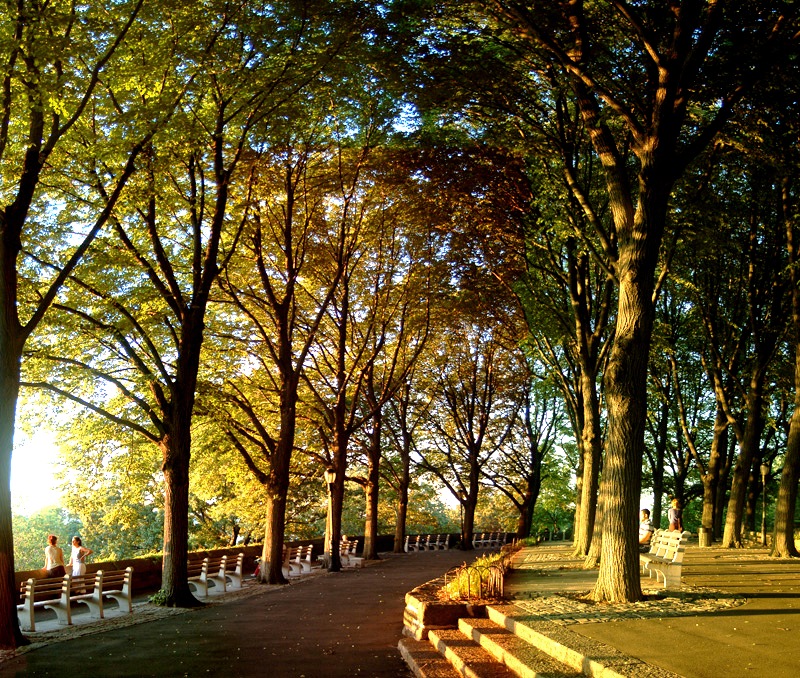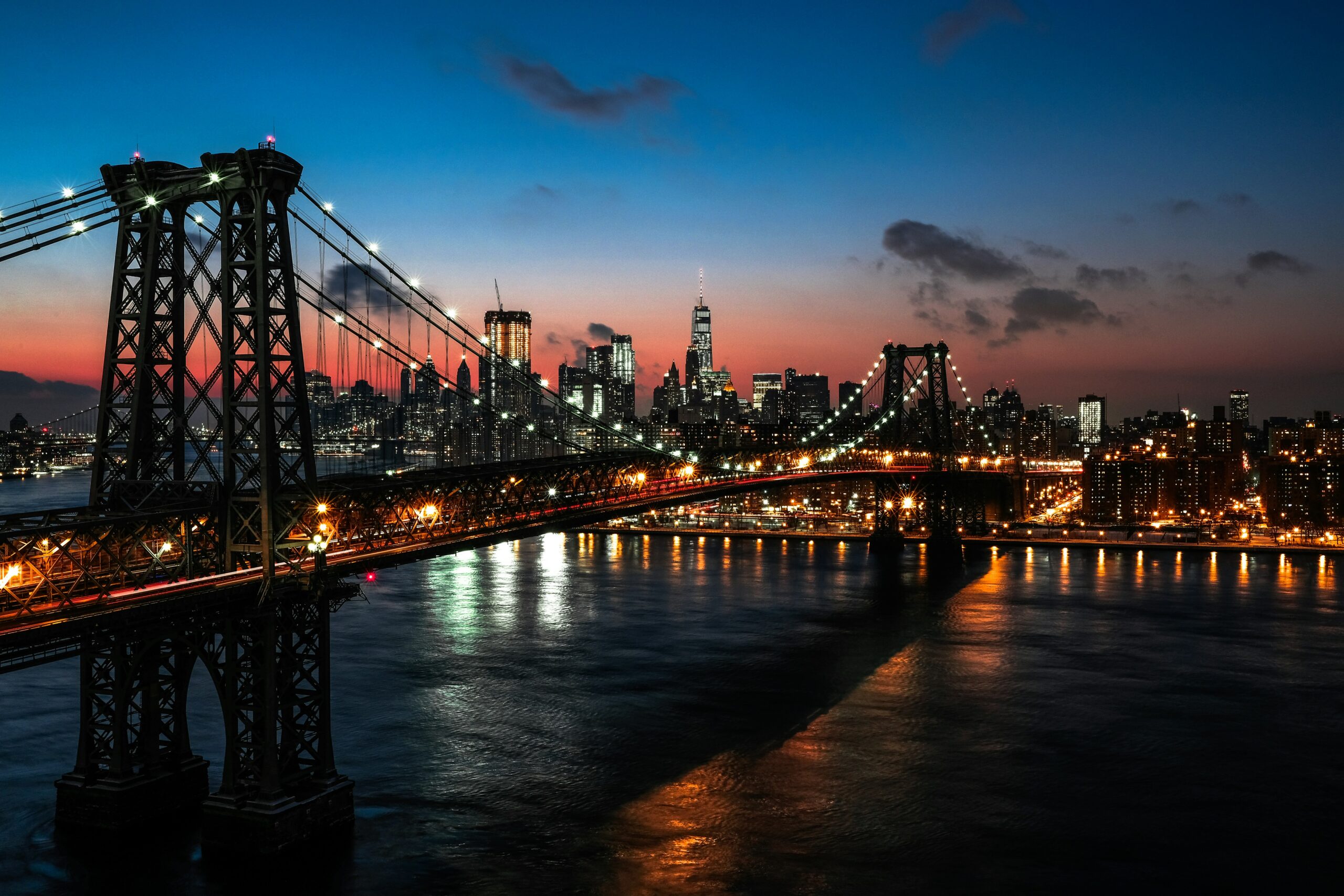Last Update On: June 20, 2025
Planning a trip to the Northeast? From historic battlefields to breathtaking parks, the region is packed with landmarks that capture the best of American history, nature, and culture. Whether you’re gazing at Niagara Falls, walking Boston’s Freedom Trail, or standing beneath the Statue of Liberty, these iconic sites offer a mix of urban energy, coastal charm, and national significance.
For this list, the Northeast includes states like New York, Massachusetts, Pennsylvania, and Maine, as well as nearby areas such as Washington, D.C. It’s a region known not just for its geography, but for its outsized role in shaping the country’s identity.
I took my first trip to the Northeast not long ago, and it was clear right away that one visit wouldn’t come close to covering it. There’s so much to see, it would take more trips than I can begin to guess to experience it all.
Whether it’s spring blossoms, summer trails, fall foliage, or winter lights, the Northeast offers something memorable in every season. Here are nine landmarks that capture what makes the region so unique.
1. Statue of Liberty, New York

Of all the places I didn’t make it to when I visited New York, this one stings the most. I regret skipping it and definitely plan to go back for it—it’s at the top of my list. In the meantime, I’ve done plenty of research and planning, and I’ve pulled together the most useful tips and details that real visitors say make or break the experience.
One of the most recognizable landmarks in the world, the Statue of Liberty has stood in New York Harbor since 1886. Gifted by France, it was designed by Frédéric Auguste Bartholdi with a metal frame engineered by Gustave Eiffel—yes, the same Eiffel behind the tower in Paris. The statue represents Libertas, the Roman goddess of freedom, holding a torch in one hand and a tablet inscribed with July 4, 1776, in the other.
To visit, you’ll take a ferry operated by Statue City Cruises, either from Battery Park in New York or Liberty State Park in New Jersey. According to regular visitors, the New Jersey side tends to be less crowded and has easier parking—and the ferry ride gives you better views of the Manhattan skyline. Forum contributors consistently recommend booking the earliest ferry of the day to avoid long waits at security and beat the crowds to the island.
There’s airport-style security screening before you board, so arrive at least 30 minutes early, even with timed tickets. If you’re planning to visit the pedestal or crown, large bags aren’t allowed. You’ll need to use lockers on the island, which cost about $2 for two hours and require exact change or a card.
Crown access is limited and requires advance booking—1 to 3 months ahead, depending on the season. There’s no elevator, and it’s a climb of 162 tight spiral steps to the top. The space is small, not ventilated, and can be uncomfortable in the summer. The pedestal has an elevator and still offers great views, so it’s a solid alternative for those who don’t want to climb.
The on-site museum opened in 2019 and includes the original torch, interactive exhibits, and a detailed look at how the statue was built, shipped, and assembled. Visitors say it adds depth to the experience that most quick tours don’t provide. Whether you’re viewing from the ferry or heading to the crown, it’s a place that makes an impression.
If you’re planning a trip to New York, check out my full post on things to do in the state for more ideas.
2. Niagara Falls, New York

This is another one I haven’t seen yet—but I’ve spent a lot of time researching it and reading what visitors actually say. Some go once and call it a bucket-list moment. Others say it’s not what they expected—but still worth it if you know what you’re doing. Based on that, here’s what stands out.
Niagara Falls sits right on the border of New York and Ontario and is made up of three waterfalls: Horseshoe Falls (the largest and most powerful, mostly on the Canadian side), American Falls, and Bridal Veil Falls. Together, they move more water than any other waterfall in North America.
Which side you visit makes a big difference. The Canadian side offers the iconic postcard view. You’ll see all three falls at once, and the vantage points are wide and open. But the U.S. side gets you closer to the falls themselves, especially through Cave of the Winds and the Goat Island walkways. For route details, photos, and user reviews of the paved loop with waterfall views, check out the Goat Island Scenic Walk on AllTrails. As one traveler put it: the Canadian side is for the view; the American side is for the feeling.
If you go, plan your timing. Most attractions, including Maid of the Mist and Cave of the Winds, are seasonal and shut down in winter. Late spring through early fall is ideal. Crowds are a factor year-round, especially midday. Go early or late to avoid the worst of it. According to frequent visitors, the nighttime illumination is beautiful, but fireworks are limited to certain nights—usually weekends in the summer.
Some of the lesser-known experiences include:
- Journey Behind the Falls (Canadian side), where you stand behind a curtain of water and feel the force shake the tunnel walls.
- The White Water Walk and Whirlpool Aero Car, which are quieter and less crowded, with more focus on the river itself.
A few practical notes: parking can be expensive on both sides, especially near the main viewing areas. Several people recommend walking in from a nearby hotel or using paid lots farther out. And if you’re visiting during peak season, be prepared for long lines and limited shade—pack accordingly.
Like a lot of major landmarks, Niagara Falls draws crowds, tour buses, and souvenir shops. But if you plan right and hit the right vantage points, it sounds like one of the few places that still delivers the kind of “wow” moment people travel for.
3. Freedom Trail, Massachusetts

I haven’t walked the full trail myself yet, but it’s one of the places I’ve spent a lot of time reading about—especially from people who’ve done it recently. Most call it a must-do, but they also point out a few things that help make the experience better if you plan it right.
The Freedom Trail is a 2.5-mile brick path that winds through downtown Boston and passes 16 historic sites tied to the American Revolution. It starts at Boston Common and ends at the USS Constitution in Charlestown. Along the way, you’ll see places like the Massachusetts State House, Faneuil Hall, the Old North Church, and the site of the Boston Massacre.
You can walk the whole thing in about two to three hours if you keep a steady pace and don’t stop for long. If you go inside museums or take guided tours, it can easily stretch to four to six hours. A lot of people recommend splitting it into two parts, especially in the summer when the heat and foot traffic can wear you down.
Some of the stops are more impactful from the outside, like the Old North Church. If you’re short on time or just want the highlights, it’s totally fine to skip a few interior visits and focus on the walk itself.
The trail is mostly flat and easy to follow. A red brick line marks the entire route, though a few people mentioned that it can be easy to lose track of near busy intersections or when it’s crowded. If you’re doing it on your own, printed maps and mobile apps help a lot. That said, many visitors strongly recommend taking at least one guided portion. The costumed interpreters are said to be great storytellers, and they help bring context to what you’re seeing.
The trail itself is free, but some of the indoor sites—like Paul Revere’s House, the Old South Meeting House, and the Old State House—charge a small admission fee. Early mornings during the week are the best time to go if you want to avoid crowds and have a smoother walk.
It’s one of those experiences where you don’t just learn about the Revolution—you’re standing right where it happened.
4. Fort Tyrone Park, New York

If you’re looking for something in New York City that’s beautiful, peaceful, and not swarming with tourists, Fort Tryon Park delivers. Tucked away in Washington Heights, this 67-acre public park is perched high above the Hudson River and offers some of the best views in Manhattan—including the Palisades across the water. It’s a favorite among locals and shows up often in conversations about the best under-the-radar spots in the city.
The park is home to the Met Cloisters, a branch of the Metropolitan Museum of Art devoted to medieval European art and architecture. Housed in a building designed to resemble a French monastery, the museum blends right into the landscape. It’s quiet, contemplative, and completely different from anything else you’ll find in New York. According to visitors, it feels more like stepping into another century than stepping into a museum.
People on travel forums often describe Fort Tryon Park as clean, serene, and surprisingly uncrowded, even on weekends. The gardens are well-kept and seasonal—spring and fall are especially beautiful—but it’s a great walk any time of year. The park also has a few remnants from its Revolutionary War history, and signs near the paths give a little background on what once stood there.
This isn’t a place where you’re elbow-to-elbow with street vendors or dodging selfie sticks. It’s where you go when you want to see a part of the city that locals actually use to relax. Bring good walking shoes and take your time—you’ll get quiet views, fresh air, and a side of New York most tourists miss completely.
For more park info and a detailed map of walking paths and gardens, visit the official Fort Tryon Park page.
5. Acadia National Park, Maine

Acadia National Park covers over 47,000 acres on Maine’s Mount Desert Island and surrounding areas. It’s one of the most visited national parks in the Northeast, with a wide range of terrain that includes granite peaks, rocky coastline, lakes, and dense forests—all within a short drive of each other.
There are more than 120 miles of hiking trails, ranging from family-friendly walks to steep cliffside climbs like the Precipice Trail. The 45 miles of carriage roads, built in the early 1900s, are a favorite among cyclists, joggers, and anyone who wants a quieter route without cars. You can access the park’s best-known spots, like Sand Beach, Thunder Hole, Jordan Pond, and the summit of Cadillac Mountain, via the 27-mile Park Loop Road.
If you’re only visiting for a day, several Quora users suggest picking one or two areas to focus on rather than trying to do it all. Driving the Loop Road and stopping at key overlooks, hiking a short trail like Ocean Path, or doing the Jordan Pond loop will give you a solid overview without feeling rushed. Cadillac Mountain is popular for sunrise views, but parking is limited and requires a timed vehicle reservation in summer months. Arriving early is key.
Parking throughout the park fills up quickly during peak season. The Island Explorer shuttle is free and runs to most major trailheads and scenic points—worth considering if you want to skip the stress. Some travelers recommend skipping the visitor center if you’re short on time and heading straight into the park.
Wildlife sightings are hit or miss, but visitors often report spotting moose, porcupines, and seals. Stargazing is excellent due to low light pollution. For paddling, Echo Lake and Long Pond are easy to reach and often less crowded than ocean-access points.
For trail maps, entrance fees, seasonal tips, and reservation info, visit the official Acadia National Park site: nps.gov/acad.
6. Washington D.C.

Washington, D.C. has no shortage of major landmarks, but it can be a challenge to navigate if you don’t plan ahead. I didn’t do my homework before going, and it showed. Traffic was heavier than expected, and parking near the White House was almost impossible. We lucked out and found a spot nearby, but only managed to see the outside of the building from behind fences and security barriers.
Public tours of the White House are available, but they have to be arranged through a Congressional office well in advance, and even then, access is limited to a few rooms in the East Wing. If you don’t have a tour booked, the experience is mostly walking by, hoping for a clear view, and moving on.
The better approach to D.C. is to plan your day around places that are easier to access and offer more to explore. The Smithsonian museums are free to enter and cover everything from art and history to air and space. The buildings are spacious, air-conditioned, and spread along the National Mall, making it easy to visit more than one in a day.
If you’re interested in government buildings, the U.S. Capitol is often easier to get into than the White House, and many visitors recommend the Library of Congress as a surprising highlight. It’s stunning inside and usually less crowded.
Navigation takes more time than you might think. Landmarks that look close on a map can take 15 or 20 minutes to walk between, especially in heat or crowds. Comfortable shoes and early starts go a long way. Driving is not recommended unless absolutely necessary. Most locals and experienced visitors suggest using the Metro or walking wherever possible.
Washington, D.C. is packed with history and impressive places to see, but it’s best enjoyed with some strategy. Know what you want to prioritize, start early, and don’t count on last-minute access to places like the White House. If you do that, there’s more than enough here to make the trip worth it.
7. Central Park, New York

Central Park is one of the most visited places in New York, but the best parts aren’t always the obvious ones. Locals and frequent visitors say the key is knowing where to go, when to go, and what not to waste time on.
Several people mention how different the park feels from one area to the next. The southern end is where most tourists start—it’s busier and has things like the zoo, the carousel, and Wollman Rink. But walk north, and it gets quieter. You’ll find the Conservatory Garden (underrated and peaceful), The Ramble (a favorite for birdwatchers), and spots that feel completely removed from the city.
Bethesda Terrace is the one place almost everyone agrees on. Locals call it the “heart” of the park, and it lives up to the hype. You get a view of The Lake, hear live musicians, and see a mix of tourists and longtime New Yorkers just hanging out. It’s a good middle point if you want to experience what makes the park feel alive without it feeling like a tourist trap.
People often mention running into drum circles, street performers, or roller-dancing crews in random corners of the park. That’s part of what makes Central Park feel special. You never really know what you’ll stumble across. But if you’re rushing from one photo spot to the next, you’ll probably miss it.
A lot of the most useful advice comes down to simple things: don’t expect good food inside the park, wear real shoes, and don’t try to “see it all.” Instead, pick two or three spots that actually interest you and give yourself time to enjoy them.
Plenty of New Yorkers say they’ve been to Central Park hundreds of times and still go back. Some come just to read under a tree or walk after work. Others avoid the south end completely and head straight for The Ramble or Great Hill. It’s one of the few places in Manhattan where you can actually feel like you have space to breathe.
For more details on maps, tours, and what’s happening in the park, check out the Central Park Conservancy’s official visitor page.
8. Hudson Valley, New York

If you’re looking for a getaway that feels like a real break from the city, Hudson Valley is worth the drive. A lot of people describe it as peaceful, scenic, and easy to settle into—even if you’re just there for a day or two. What I kept hearing over and over is that it’s not about checking off big attractions—it’s more about wandering, slowing down, and letting the area kind of unfold as you go.
There’s a long list of small towns that each have their own thing going on. Beacon has art galleries and trails, Hudson is great for shopping and food, and Rhinebeck gives off that old-town charm without feeling fake. Locals talk about hitting up farmers markets, cider tastings, or just walking around with no real plan—and honestly, that seems like the best way to experience it.
The food scene is a big draw. You’ll find a lot of farm-to-table spots, plus roadside bakeries, cheese shops, and places to grab local wine or hard cider. A lot of people mentioned going during the fall when the leaves change, farms open for apple picking, and the whole area smells like woodsmoke and fresh donuts. But even in spring or summer, there’s plenty of hiking, kayaking, and outdoor space to explore.
One thing that stuck with me: people don’t just visit Hudson Valley, they go back. Not because there’s a giant list of bucket-list stuff, but because it’s the kind of place where you actually feel like you can breathe. If you’ve ever wanted to take a weekend and just do your own thing without a big crowd or tight schedule, this is that kind of place.
9. Boston Common and Public Garden, Massachusetts

Boston Common and the Public Garden sit side by side in the middle of the city, but they’re very different. The Common is the older of the two and has more open space, but it’s rougher around the edges—locals don’t recommend spending too much time there, especially at night. It’s fine to walk through during the day, especially if you’re following the Freedom Trail, which starts nearby.
The Public Garden, right across Charles Street, is the part you’ll actually want to stop and enjoy. It’s small, only about 24 acres, but it’s full of shade trees, benches, walking paths, and flowers. Spring and fall are the best times to visit, but there’s something going on year-round.
Top things to do in the Public Garden include riding the Swan Boats, a quiet and affordable activity that has been a local tradition for generations. The “Make Way for Ducklings” statues are especially popular with kids and make for a quick, fun stop. You can also sit on the grass, walk the winding paths, and take in the scenery. Several notable statues are scattered throughout the park, including the well-known George Washington on horseback. For a quieter moment, the 9/11 memorial offers a peaceful space for reflection.
The Public Garden is walkable from Beacon Hill, Newbury Street, and the State House. You can take the Green Line to Arlington or Park Street. There are food vendors around the edges, but no major restaurants inside the park—bring a snack if you plan to stay a while.
If you’re already downtown, it’s easy to fit both parks into your day. Just don’t expect the Common to be as polished as the Garden.



Leave a Reply